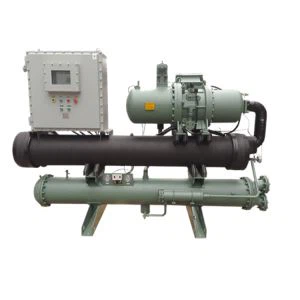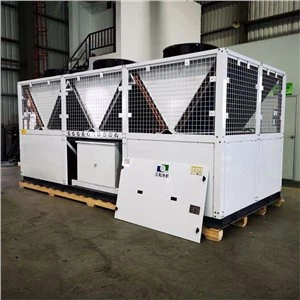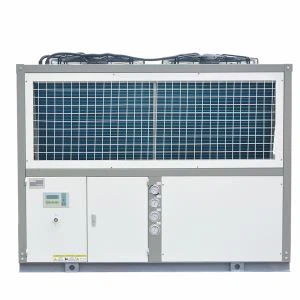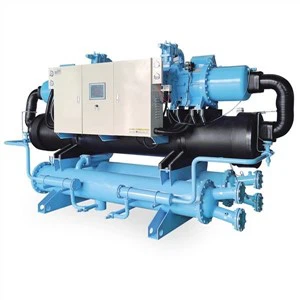Hey there! As a supplier of low temperature chillers, I often get asked if these chillers can be used in a plastic injection molding factory. Well, the short answer is yes, and in this blog, I'll dive deep into why and how low temperature chillers are a great fit for plastic injection molding operations.
Understanding Plastic Injection Molding
First off, let's quickly go over what plastic injection molding is. It's a manufacturing process used to produce parts by injecting molten plastic into a mold. The process involves heating plastic pellets until they turn into a liquid state, then forcing this molten plastic into a custom - designed mold cavity. Once the plastic cools and solidifies inside the mold, the mold opens, and the finished part is ejected.


The cooling phase is a critical part of this process. How quickly and evenly the plastic cools can significantly affect the quality of the final product. If the cooling is too slow, it can lead to longer cycle times, which means lower production rates. On the other hand, uneven cooling can cause warping, shrinkage, and other defects in the plastic parts.
How Low Temperature Chillers Can Help
Now, let's talk about how low temperature chillers come into play. Low temperature chillers are designed to provide a consistent and low - temperature coolant. In a plastic injection molding factory, they can be used to cool the mold and the plastic inside it.
One of the main advantages of using a low temperature chiller is the ability to speed up the cooling process. When you can cool the plastic faster, you can reduce the cycle time between each injection. This means you can produce more parts in a shorter amount of time, which is great for increasing productivity and reducing costs.
Another benefit is improved part quality. By providing a uniform and low temperature, low temperature chillers help ensure that the plastic cools evenly throughout the mold. This reduces the chances of warping and shrinkage, resulting in high - quality, dimensionally accurate plastic parts.
Types of Low Temperature Chillers for Plastic Injection Molding
There are different types of low temperature chillers that can be used in plastic injection molding factories. For instance, the Low Temperature Glycol Chiller System -10℃ is a popular choice. It uses a glycol - water mixture as the coolant, which can maintain a temperature of - 10℃. This lower temperature can be ideal for certain types of plastics that require a more rapid cooling rate.
If you need an even lower temperature, the Low Temperature Glycol Chiller -25℃ might be the right option. With a temperature as low as - 25℃, it can handle plastics that need extreme cooling conditions.
There are also Low Temperature Glycol Chillers in general, which come in various configurations and capacities to suit different factory sizes and production requirements. These chillers are reliable, energy - efficient, and can be customized to fit your specific needs.
Considerations When Using Low Temperature Chillers in Plastic Injection Molding
While low temperature chillers offer many benefits, there are also some things to consider before using them in a plastic injection molding factory.
First, you need to make sure that the chiller's capacity matches your production needs. If the chiller is too small, it won't be able to cool the molds effectively, leading to longer cycle times and poor part quality. On the other hand, if it's too large, you'll be wasting energy and money.
You also need to think about the type of plastic you're using. Different plastics have different cooling requirements. Some plastics might not need extremely low temperatures, and using a very low - temperature chiller could actually cause problems like brittleness in the final parts.
Maintenance is another important factor. Low temperature chillers need regular maintenance to ensure they operate efficiently. This includes checking the coolant levels, cleaning the filters, and inspecting the compressor and other components.
Installation and Integration
Installing a low temperature chiller in a plastic injection molding factory requires careful planning. You need to find a suitable location for the chiller where it has enough space for ventilation and easy access for maintenance. The chiller also needs to be properly integrated with the existing injection molding equipment.
This usually involves connecting the chiller to the cooling lines of the molds. It's important to ensure that the connections are leak - free and that the coolant can flow smoothly through the system. You might also need to install additional pumps or valves to control the flow of the coolant.
Cost - Benefit Analysis
When it comes to investing in a low temperature chiller for your plastic injection molding factory, it's important to do a cost - benefit analysis. On the cost side, you have the initial purchase price of the chiller, the installation costs, and the ongoing energy and maintenance costs.
However, on the benefit side, you have increased productivity, improved part quality, and potentially lower production costs in the long run. By reducing the cycle time, you can produce more parts, which means more revenue. And by producing high - quality parts, you can reduce the number of defective products and improve customer satisfaction.
Conclusion
In conclusion, low temperature chillers can definitely be used in a plastic injection molding factory, and they offer a lot of advantages. They can help you speed up the cooling process, improve part quality, and increase productivity. With different types of low temperature chillers available, like the Low Temperature Glycol Chiller System -10℃, Low Temperature Glycol Chiller -25℃, and Low Temperature Glycol Chillers, you can find the right one to suit your specific needs.
If you're thinking about adding a low temperature chiller to your plastic injection molding operation, I'd love to have a chat with you. We can discuss your requirements, help you choose the right chiller, and answer any questions you might have. So, don't hesitate to reach out and start a conversation about how we can take your plastic injection molding business to the next level.
References
- Modern Plastics Encyclopedia.
- Handbook of Plastic Injection Molding.






